Last updated on September 2nd, 2024
Featured image: The Royal Alcázar in Seville is open on Christmas Eve | Photo by Dmitry Dzhus via Wikimedia Commons
With less crowds and lineups, Seville charms at every turn
By Carolyn Ray, Editor, JourneyWoman
Of all the cities I’ve been to in Spain, Seville’s charm keeps calling me back. I spent the last week of December 2022 in Seville, a short train ride from Malaga, which was my home base for two months.
Southern Spain in the off season is wonderful – there are very few tourists, the temperature is ideal for outdoor activities and there are virtually no lineups. Wherever I travelled in Spain, from Cordoba to Nerja to Bilbao and Girona, I was able to enjoy the rhythm of each city, wander without an agenda and see these places as they really are — in some ways, unvarnished and authentic. Prices are lower too, and I never had to reserve a seat at a restaurant.
This was my fourth time in Seville, a city that I have seen in all seasons. On this trip, I stayed at the El Rey de Moro, a small boutique hotel in the Jewish Quarter, Santa Cruz, for a week over the holidays. Not only does it have an inhouse restaurant, it has a small inner courtyard and rooftop view of the Cathedral. It’s perfectly positioned to explore the city, with the Alcazar and Cathedral only minutes away, and a 15-minute walk or bus ride from the train station. In Seville, you don’t need (or want) a car. Bikes, walking and public transportation are easily accessed and most of the Jewish Quarter is so narrow you’ll want to walk and explore all the boutique shops. Much to my surprise, most shops, attractions and restaurants were open the entire week, with the exception of Christmas Day, which was a sunny, warm day, perfect for a bike ride along the river.
A complicated history
Founded as the Roman city of Hispalis over 2,200 years ago, Seville is the largest city in Andalusia, and the fourth-largest city in Spain. Everywhere in Seville, there is a blend of the ancient with Roman columns and remnants of walls, blended with Moorish and Jewish culture.
Before the Inquisition, Seville was a place where people from different backgrounds lived together peacefully. But 1492 was a turning point for Spain, not only for the discovery of America, but also the year that Jews were forced to convert or flee from Spain, despite their prominent roles in agriculture, education, commerce, medicine and politics. Spain was once home to one of Europe’s most vibrant Jewish communities, some 250,000 members strong in 1492.
The more I travel in Spain, the more I see that the country is still coming to terms with its past. Archaeological sites are still being found, ancient ruins are being restored, and its history — and its story — is still unfolding. Seville, Cordoba, Granada, Girona and Malaga are all important places for women to visit and understand Spain’s complicated past and its culture today.
Seven things for women to do in Seville
1. Learn about Seville’s history in the Jewish quarter, Barrio Santa Cruz
As I’ve travelled across Europe, I’ve been repeatedly shocked by the expulsion of the Jews. It’s no different in Seville, where the Jewish quarter’s land and shops were appropriated by the church. The year 1492 may be known by most of us when Christopher Columbus discovered America, but it’s also the year that all Jews were forced to convert to Catholicism or be exiled from Spain.
To understand Seville’s Jewish history, I booked a 90-minute walking tour with Tripadvisor (conducted by Seville Experiences) with guide Carla. Not only did Carla openly explain the tumultuous history and pogroms of the Jews from Seville, she showed me how to navigate the quarter and understand the meaning of each winding street.
As you travel through Spain, look for the symbol of the Sephardi Jews (those who came from Seville) it’s shaped like the Iberian peninsula. There are still many Sephardies (Spanish Jews) living around the world because of the Diaspora (dispersion of the Jewish community) along the history. These symbols indicate places of importance to the Jews, as guideposts to the past, and are on the walls or on the ground.
It’s shocking to think that there are no synagogues remaining in Seville, when there were once 33. The original entrance to the Jewish quarter is next to the Alcazar and Blanca Church. Today, there are only three medieval synagogues that survive in Spain; two in Toledo and one in Córdoba, compared to hundreds before 1492. In Seville, the Jewish cemetery was just outside the city walls, and sadly, as modern buildings were built, some tombstones still remain in the underground parking lot.
Things to do: Find endless activities and things to do in Seville by clicking here
2. Do a Seville food tour
On December 26, I took a three-hour walking tour for 69 Euros with Asya from Spain Food Sherpas with stops in four restaurants, starting in Las Setas and ending in Santa Justa. Surprisingly most restaurants were open and crowded with locals.
Even though I’d been in Seville for four days, I discovered new food highlights like espinacas con garbanzos, or spinach and chickpeas, salmorejo, a dish made using tomatoes, water, garlic and breadcrumbs, and my all-time favorite – chicharrones, which is small pieces of fried pork (not to be confused with the Cadiz version of the same name, served in slices).
While you’re in Seville try these restaurants: La Brunilda, Bar El Pasaje, Puratesca, Estava Bar Restaurante Casa Manolo, and La Gitana Loca.
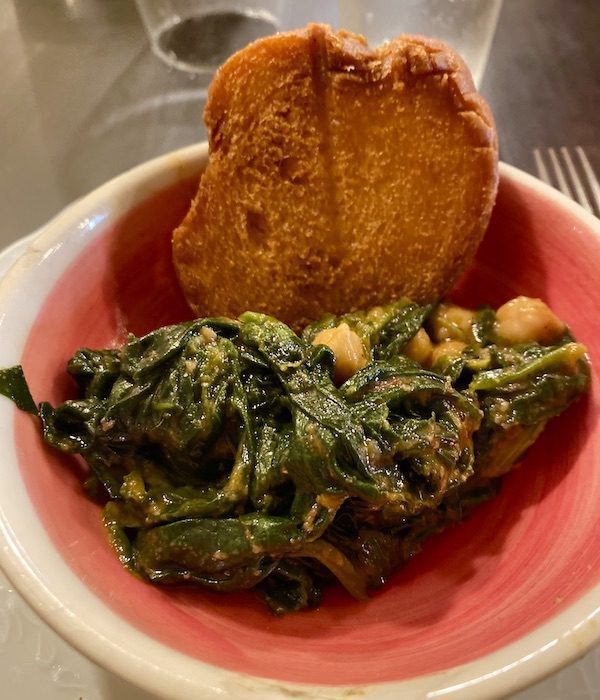
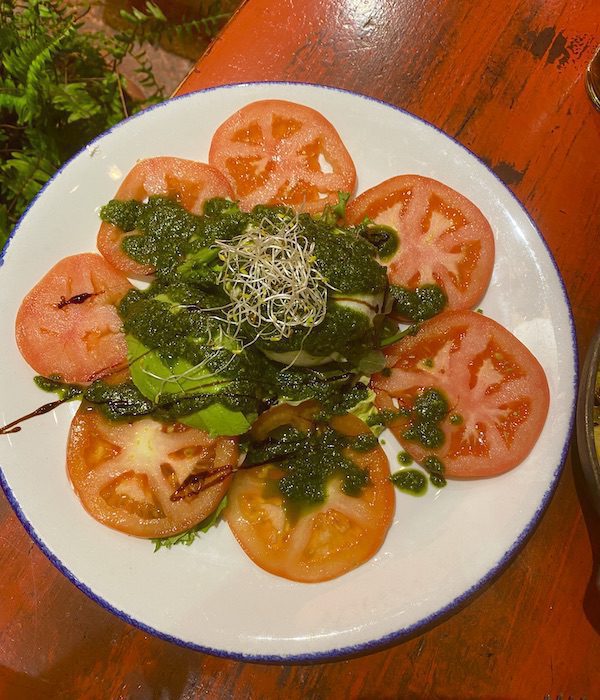
3. Spend several hours strolling the Royal Alcázar Gardens
Of all the royal palaces I’ve seen in Spain, including the Alhambra in Granada and Alcazar in Malaga, the Seville Alcazár, built in the mid-14th century is most stunning and best preserved, blending Islamic, Renaissance, Gothic, and Baroque styles. When I visited on December 24, it was a sunny day with a warm breeze, perfect for strolling the gardens. My memory of that day includes peacocks and parrots, the smell of juniper and fountains.
The Seville Alcazar is the finest example of “Mudejar” architecture in the world, bringing together both Moorish and Spanish Christian elements, with its magnificent golden domed ceiling in the Ambassadors Room, the Patio de las Doncellas (Maidens Courtyard, the Courtyard of the Dolls, Los Baños de Doña María de Padilla beneath the Patio del Crucero and of course the gardens. For Game of Thrones fans, you’ll want to stop by the Ambassadors’ Hall, Mercury’s Pool, the Baths of Maria de Padilla, and the gardens to visualize Dorne and Meereen. If you want to get a preview, look at Google’s “Walk Through the Royal Alcázar”.
The Alcazar is free on Mondays but you need to book your tickets in advance. Don’t miss an opportunity to visit the private apartments upstairs. The regular price is L13.50 but there is a reduced ticket for EU citizens who are retired or over 65.

The Courtyard of the Dolls at the Royal Alcazar on Decembr 24 / Photo by Carolyn Ray
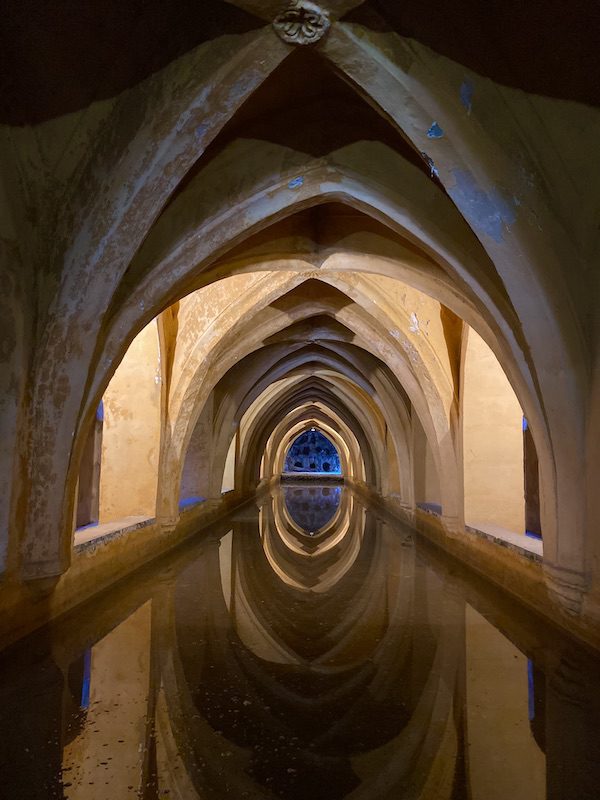
4. Cross the bridge to Triana to the Mercado de Triana
When you cross the iron bridge to Triana, you may be the only tourist. Triana is one of the less-visited spots in Seville but well worth a trip, if only for the food and desserts. I enjoyed lunch standing at the counter at Tipico Barra de Tapas and dessert at Maya Juna (get the cookies to go!)
There are many places to discover including a striking yellow church, Santa Ana Church of 1276. You can buy fresh vegetables at the Mercado de Triana and see the roman ruins below, part of Castillo de San Jorge, where the Spanish Inquisition began.
Read More: Sally Peabody’s Insider tips on Triana, Seville
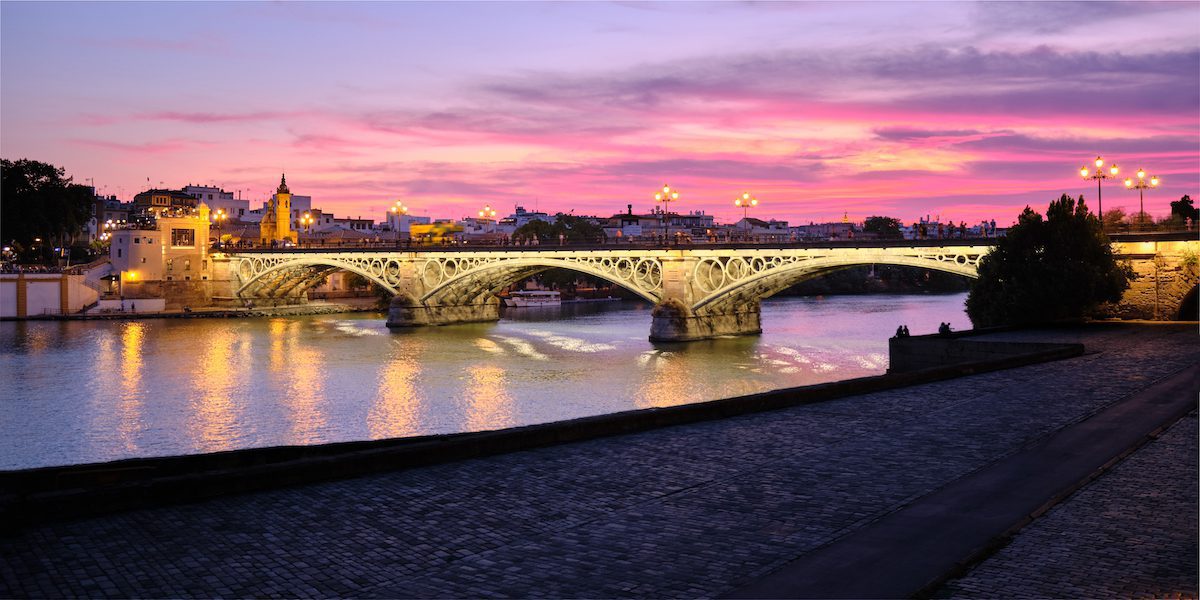
5. Feel the energy of flamenco, but off the beaten path
No city is more synonymous with flamenco than Seville. My guide Asya recommended La Carboneria at Calle Levíes, 18, over some of the more touristic ‘flamenco and dinner’ shows. It’s a little hidden, down an alley in the Jewish Quarter, but you’ll find it. There is no charge to watch the show, which runs about every 30 minutes, ending around 10 pm (at least in December).
I went twice and loved it. There are long wooden tables around the performance area and simple snacks, creating an intimate connection. No need to dress up, it’s very authentic and original. Videos are not permitted as they distract the performers.
6. Skip the boat tour, ride a bike
The Río Guadalquivir flows through Seville and is the only navigable river in Spain. It’s also the place where Ferdinand Magellan sailed with his ships to Sanlucar de Barrameda and from there, to the open sea to circumnavigate the Earth in 1519. The real river runs a kilometer further, out of the city, as it was diverted due to flooding.
While I always love being on the water, 18 euros is a steep price to pay for a 30-minute boat ride when you can bike along the river at your own pace. Sights to see include the Bridge of Triana, built in 1852, the Expo 92 buildings and the rowers on the river. Seville has many bike lanes and paths, and many hotels including mine, offer free bikes.
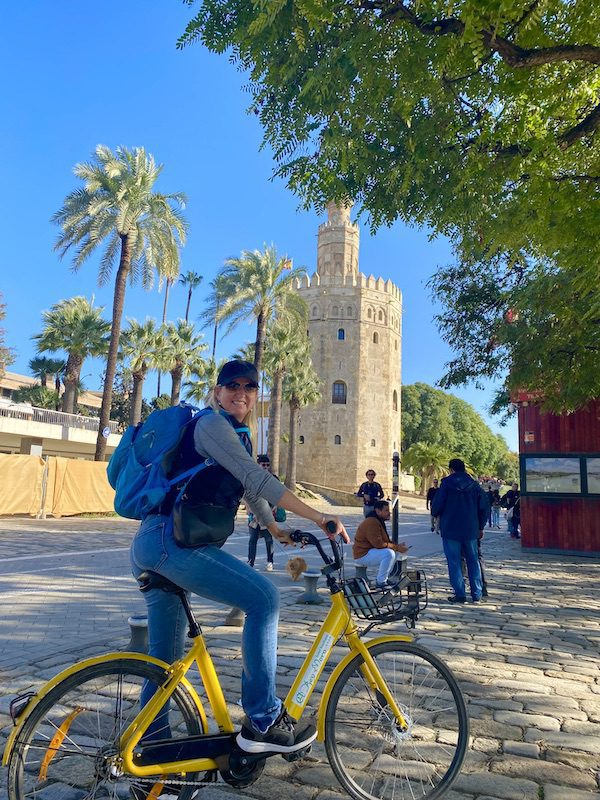

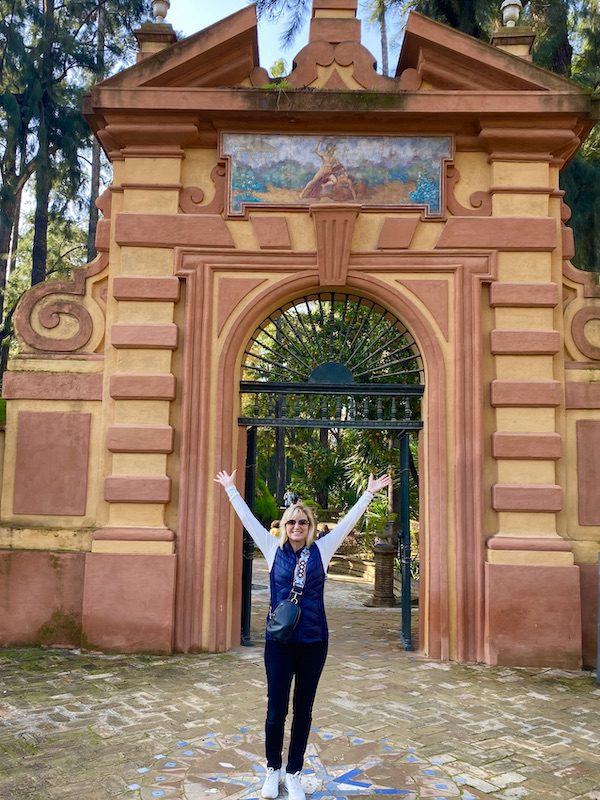
7. Climb the Giralda Tower
One of my favorite places in the world is the Seville Cathedral (or Cathedral of Saint Mary of the See/ Catedral de Santa María de la Sede), which is a UNESCO World Heritage Site, along with the adjoining Alcázar palace complex and the General Archive of the Indies.
It is one of the largest churches in the world as well as the largest Gothic church. While the draw is no longer to see the soldiers carrying Christopher Columbus and his son Diego’s remains, it is a historic place. Seville Cathedral is the site of many historic moments, including the baptism of Infante Juan of Aragon in 1478, only son of the Catholic Monarchs Ferdinand II of Aragon and Isabella I of Castile. Its royal chapel holds the remains of the city’s conqueror, Ferdinand III of Castile, his son and heir, Alfonso the Wise, and their descendant, King Peter the Cruel.
Like Cordoba, several mosques preceded it and fortunately some of the architectural elements can still be seen, notably the Patio de los Naranjos, the courtyard of the original mosque. (Remember, don’t eat the oranges – they’re sour! Originally planted by the Muslims for perfume manufacturing, they’re now used in various food products like chocolate and pastries.)
Tickets are 11 Euros regular price and 6 Euros for those over 65. Find a guided tour of the Cathedral here.
My week in Seville only whetted my appetitie to return again, and again, and again. What do you love most about Seville?
Less-Travelled Places in Spain
Where to Stay in Barcelona, Spain: Recommendations From Solo Women
Women share their recommendations on where to stay in Barcelona, Spain, including hotels, hostels and affordable accommodations.
Transforming an Abandoned Quarry Into a Vineyard: A Story of Sustainability in Mallorca
On the wine-producing island of Mallorca, Spain, entrepreneur Virginia Pones is bringing an abandoned quarry back to life as a winery, reviving her husband’s family business.
A Solo Trip to the Basque Region: Bilbao, San Sebastian and Biarritz
The Basque region, straddling northern Spain and southern France, is an area often forgotten by travellers to Spain, but from the moment I arrived I fell in love with its cultural richness, natural beauty, and food.

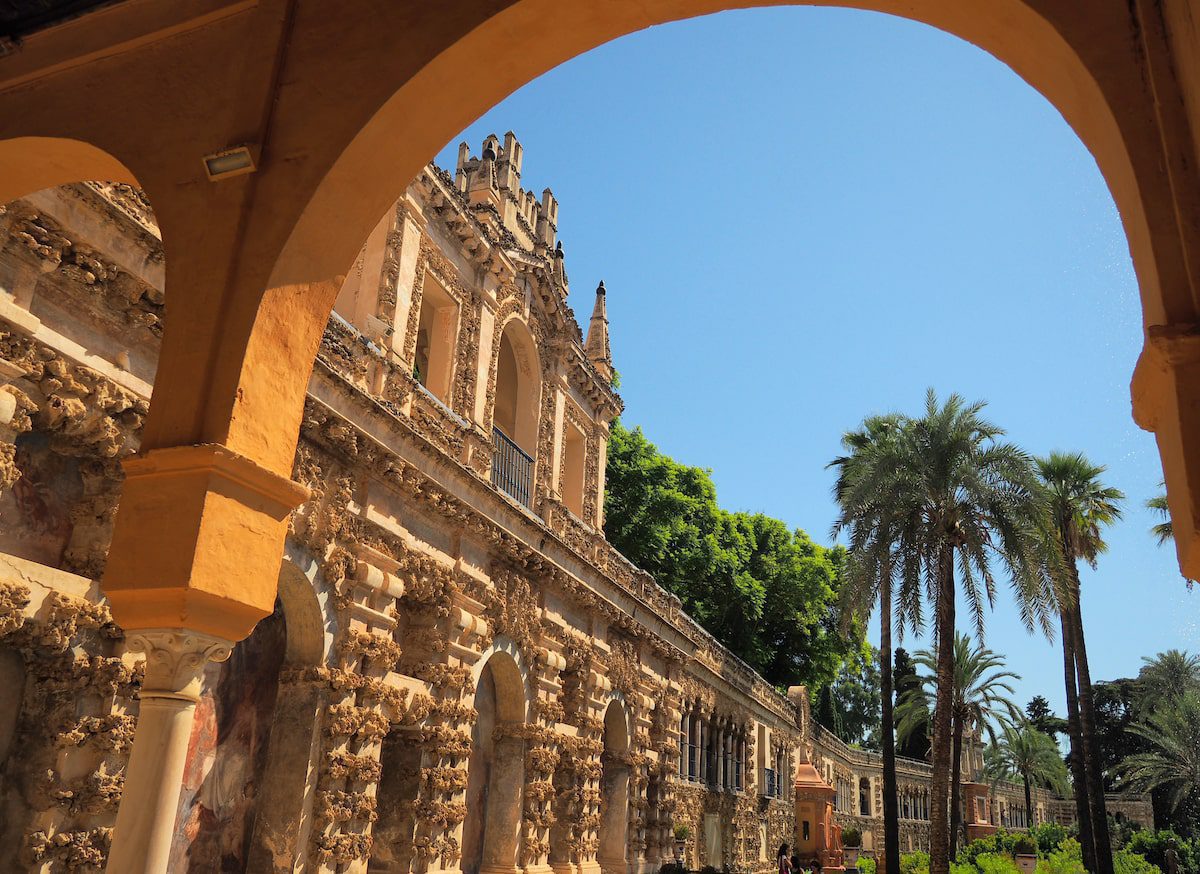



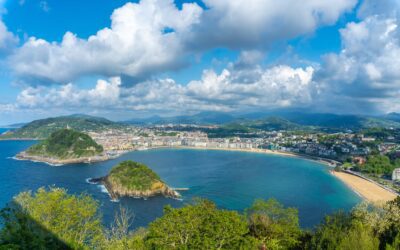
Thanks for the well written travel log, Carolyn. I just returned from a “Camino with Brakes” trip across the Andalusian portion of Spain. I just wanted to let you know that another place you should try and check out is Rhonda. I was there on Andalusian Day and their wine is something you should also try. My “Camino with Brakes” consisted of 10 cities with walking of 8-10 miles with in each city per day. Ended up in Evora, Portugal for a 2nd time before resting at my sons flat in Lisboa. Sorry I missed you in the Cotswolds last year but we will meet somewhere in the world.
I so enjoyed reading your article and envisioning living in Malaga. I know I would embrace the culture and museums I’m Pablo exhibits. Thank you very much for painted this lovely picture for me
Great article. Planning on a 2 week stay in Seville and then another 2 weeks in Malaga next March..great suggestions